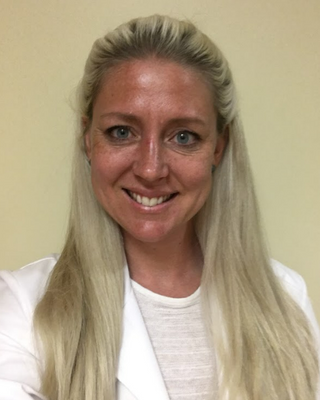AEDP Psychiatrists in Redmond, OR

Jaclyn V. Jardine
Psychiatric Nurse Practitioner, APRN, PMHNP, FNP
Verified Verified
Redmond, OR 97756 (Online Only)
Greetings! I'm a certified psychiatric nurse practitioner, skilled in aiding individuals in both inpatient and outpatient environments. I specialize in addressing issues such as substance abuse, depression, anxiety, ADHD, and PTSD, employing the latest DSM diagnostic guidelines and evidence-backed treatments. I'm committed to elevating the significance of mental health, aiming to eradicate the stigma surrounding mental illness. My mission is to guide others in prioritizing their mental well-being. Let's work together to help you rediscover your optimal self!
Greetings! I'm a certified psychiatric nurse practitioner, skilled in aiding individuals in both inpatient and outpatient environments. I specialize in addressing issues such as substance abuse, depression, anxiety, ADHD, and PTSD, employing the latest DSM diagnostic guidelines and evidence-backed treatments. I'm committed to elevating the significance of mental health, aiming to eradicate the stigma surrounding mental illness. My mission is to guide others in prioritizing their mental well-being. Let's work together to help you rediscover your optimal self!
See more therapy options for Redmond
AEDP Psychiatrists
Who is AEDP therapy for?
Accelerated Experiential Dynamic Psychotherapy (AEDP) is for adults who have experienced emotional pain in the past that, because it has not been adequately addressed and processed, interferes with current functioning. The problems might manifest in a number of different ways, from excessive anger to relationship difficulties to PTSD to eating disorders, poor self-esteem, and depression. They may also be accompanied by physiological symptoms. AEDP helps people accept and digest challenging emotional experiences.
Why do people need AEDP?
People need AEDP as a way to manage distressing emotions—including anger, shame, and guilt—that in some way hamper the ability to function and form satisfying relationships in the present. The therapist-client relationship is believed to provide corrective emotional and relational experiences that facilitate positive changes in brain function, forge pathways for processing traumatic experiences, and allow resolution of emotional pain.
What happens in AEDP therapy?
Once individuals have established a strong bond with the AEDP therapist and the therapist has established a safe and secure environment, clients are encouraged to explore their most painful emotional experiences. They may be asked to pay attention to disquieting body sensations as well as to psychological discomfort. Individuals learn how to process emotions, rather than avoid them. Through the strength of the therapist-client bond, each session is intended to provide a powerful positive experience for individuals, enabling growth.
What problems does AEDP treat?
AEDP is intended to treat the unprocessed emotional pain caused by earlier distressing experiences, which commonly includes behavioral avoidance of current situations and experiences for fear that they will reactivate painful feelings. Emotional pain and avoidant behavior play a role in a wide array of mental health conditions, which is why AEDP is applied to the treatment of a range of disorders including depression, anxiety, PTSD, relationship difficulties, and eating disorders.



